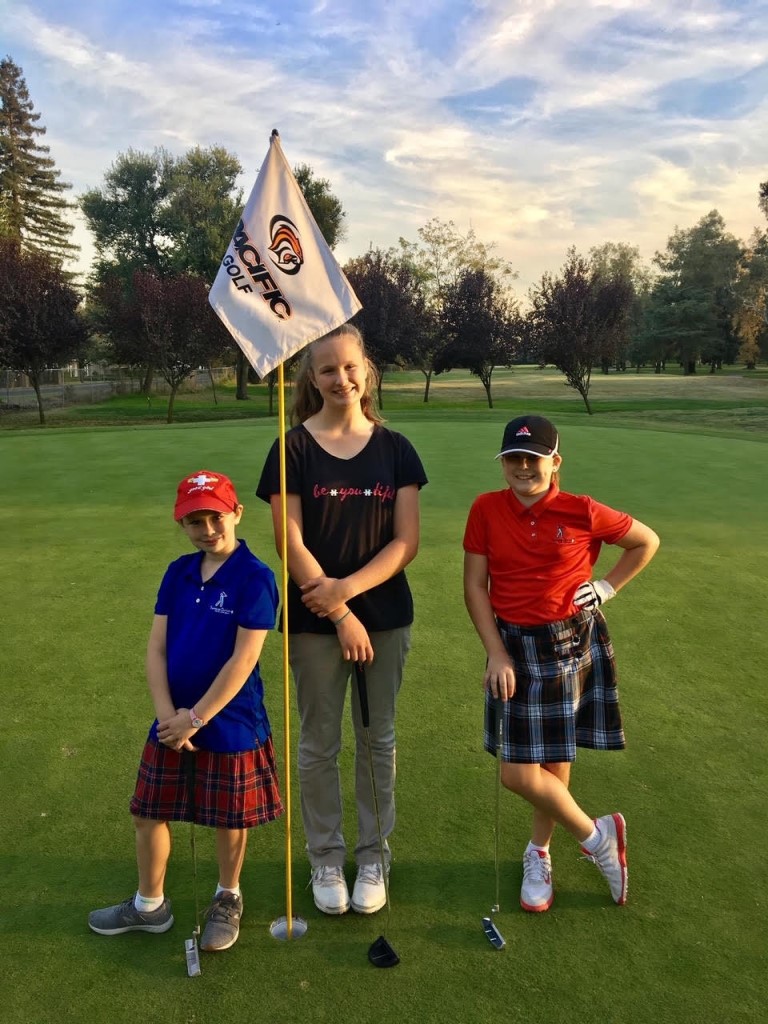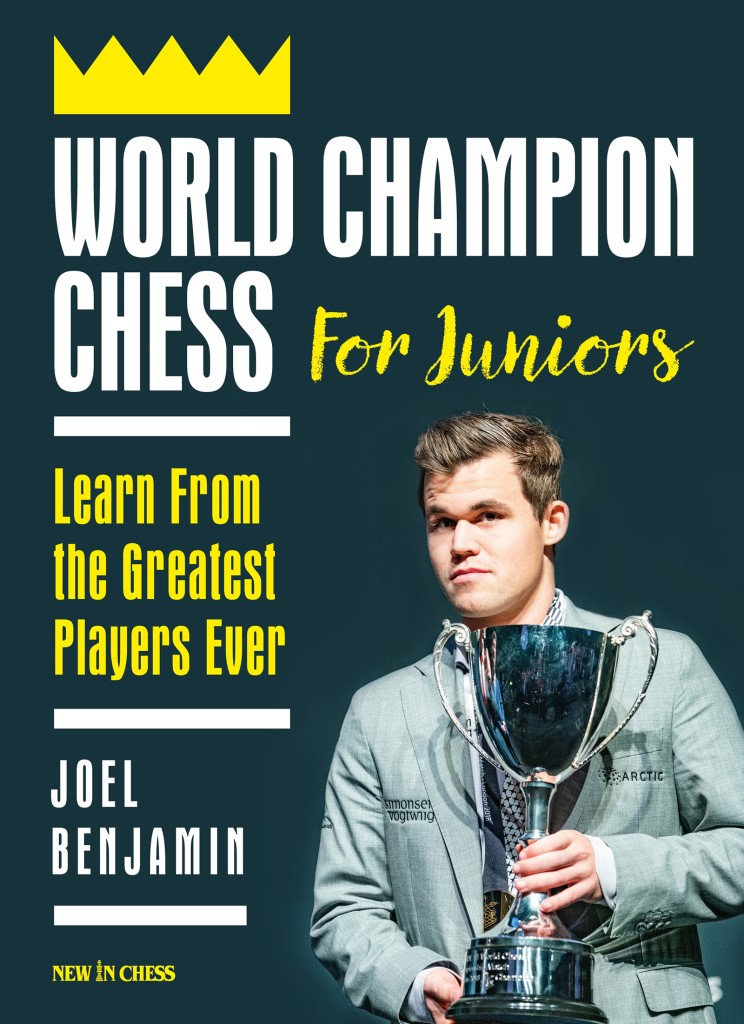


ChessBase 17 - Mega package - Edition 2024
It is the program of choice for anyone who loves the game and wants to know more about it. Start your personal success story with ChessBase and enjoy the game even more.
As mentioned in the previous golf and chess article, Reka Sztaray is a high school senior, golfer, and US Chess Senior Tournament Director. Her mother, Judit Sztaray, is the General Manager of Youth Outreach and Events at the Mechanics’ Institute. Judit credits chess and golf, along with family support, for Reka developing into a confident and capable young woman.
Judit wrote:
As a chess coach and organizer, I have noticed that children not only develop their chess skills, but also develop skills like focusing, planning, decision making, learning from mistakes, and never giving up from taking chess classes and playing in tournaments. This positive trajectory also happened for my first-born daughter, Reka. When she started learning chess at 4.5 years old, she was eager, but her focus and attention span were short, as to be expected from a pre-K student. As the years passed, she learned to focus on a game for 4-5 hours. This focus transferred to her academics. She skipped second grade, and did online schooling in Grade 6-7-8 with minimal parental supervision. Chess also helped her with planning and organizing skills. I credit chess for her ability to work well under pressure, and for her being able to plan ahead and execute her plans by deadlines. And, last but definitely not least, chess taught her to never give up. She learns from losing a match, she analyzes the mistakes, and she sees where she can do better next time.
When Reka joined her high school golf team, her resilience and focus, learned through chess, applied during hours of golf practice weekday afternoons and through each 18-hole tournament that lasts 5-6 hours. It was incredible to see that when most golfers lose focus and undershoot under pressure, Reka shot some of her best holes when it counted the most for her and for her team.
[Pictured: 9-year-old Reka playing at the Tracy Chess Club]
Understanding Middlegame Strategies Vol.1 and 2
These DVDs are about Understanding Middlegame Strategies. In the first DVD dynamic decisions involving pawns are discussed. The second DVD deals with decision making process concerning practical play.
Chess is a family affair for the Sztarays. Judit joined the rated chess world when Reka began playing in chess tournaments. At Reka’s early tournaments, Judit volunteered to help, as many parents do. Then Judit switched careers, becoming a chess organizer and a tournament director.
Reka’s two younger sisters followed in Reka’s footsteps by learning how to play chess. The family plays blitz tournaments and bughouse games after dinner. When Reka started playing golf for her high school team, her sisters learned golf and joined the junior golf league. Just as they followed Reka into chess, they followed her into golf.
Judit wrote:
These two sports really unite the family. We can play chess and golf together, and also cheer for each other. We also travel together to tournaments and events. While the travel to tournaments might be considered a strain for some families, thankfully our family enjoyed this part, as we all supported each other. Everyone found the parts of the events and travel that they liked.
 Reka has learned from her Saint Mary’s High School teammates who are better golfers than she is. Reka wrote, “One of my teammates is a youth golf champion. Playing alongside her in a pair during matches has been an incredibly educational experience. Watching her select a club, line up a difficult shot, and decide on her strategy has improved my game so much. Throughout our golf season, the games where I am paired with a teammate who scores lower (better) than I do has almost always resulted my having a lower score too. Not only do I have someone to ask for advice if need be, but I have ‘competition’ in a way, I have someone to look up to and compare my play with.”
Reka has learned from her Saint Mary’s High School teammates who are better golfers than she is. Reka wrote, “One of my teammates is a youth golf champion. Playing alongside her in a pair during matches has been an incredibly educational experience. Watching her select a club, line up a difficult shot, and decide on her strategy has improved my game so much. Throughout our golf season, the games where I am paired with a teammate who scores lower (better) than I do has almost always resulted my having a lower score too. Not only do I have someone to ask for advice if need be, but I have ‘competition’ in a way, I have someone to look up to and compare my play with.”
Reka also improves her golf skills by watching educational videos. In those videos, golf pros give excellent advice about specific problems that Reka needs to address. For example, she was having some trouble with a serious slice in her drive. Videos by Rick Shiels and Rickie Fowler really improved her swing.
Reka added, “I personally have watched so many videos from Golf Digest and the Golf Channel. Each video allows me to find what works best for me and my play. Videos help me address the current issues in my swing, while my golf coach helps with more general problems and strategies in my game.”
[Pictured: The Sztaray sisters in October, 2018 — Saci, Reka and Bori]
Just as Reka learns from her more-skilled peers and from golf pros, I learn from my more-skilled peers and from world chess champions. FIDE Master Paul Whitehead is around my age, but is better than I am at chess. On Thursdays, I’ve been attending an online course where Whitehead analyzes games from world chess championship matches.
His course is one of several online chess classes offered by the Mechanics’ Institute. Whitehead highlights games from each match, with light commentary. For example, Whitehead began the second week of the course with Game 2 of the 1866 Steinitz-Anderssen World Championship Match. After 10.Ke1, Whitehead pointed out the threat of Nf4, trapping the black queen. Thus, Whitehead explained, Black played 10…Qh5. However, I wondered what would have happened if 10…Qg2, attacking the white rook. I worked out that 11. Nf2 would paralyze the black queen. So, I refocused my attention on Whitehead, who had raced ahead to a later part of the game.
Endgames of the World Champions Vol. 2 - from Steinitz to Spassky
Enjoy Capablanca's fine technique, Tal's magic, Lasker's fighting spirit, Petrosian's defensive skills, Smyslov's feeling for harmony, and Alekhine's and Spassky's flair for the attack.
As I am writing this now, I see that the queen would not only be trapped and but lost too, after 11…Bd7 12. Bf1. As Whitehead advised, students should review the games he presents to uncover more possibilities, as I just did with move 10. Because of Whitehead’s enthusiastic lecture, I investigated this particular game, which I had never bothered to play through before. Whitehead did not hand me all the game’s variations, but spurred me to pursue them on my own.

Judit Sztaray and Paul Whitehead at the Mechanics’ Institute
 Grandmaster Joel Benjamin’s new book World Champion Chess for Juniors: Learn From the Greatest Players Ever also asks its readers, which can include adults, to study the champions. Benjamin even encourages seniors, pointing out that Steinitz’s best-loved game was played when Steinitz was 59 years old. About that win over von Bardeleben in Hastings 1895, Benjamin wrote, “The opening demonstrates the importance of rapid development, the tactics are beautiful, and there is even a funny story to the game.”
Grandmaster Joel Benjamin’s new book World Champion Chess for Juniors: Learn From the Greatest Players Ever also asks its readers, which can include adults, to study the champions. Benjamin even encourages seniors, pointing out that Steinitz’s best-loved game was played when Steinitz was 59 years old. About that win over von Bardeleben in Hastings 1895, Benjamin wrote, “The opening demonstrates the importance of rapid development, the tactics are beautiful, and there is even a funny story to the game.”
Benjamin includes more historical information about each champion than Whitehead does, but the game Whitehead selected is not in Benjamin’s book. However, the funny Steinitz-von Bardeleben story wasn’t in Whitehead’s lecture. Whitehead limits himself to games played during world championship matches and von Bardeleben never played in a world championship match. In contrast, Benjamin looks at games played by world champions, whether or not those games were part of world championship matches or played during a world champion’s reign. Benjamin’s book and Whitehead’s course can make you an expert on the world champions and improve your own chess.
Alex Chin is a senior at the University of San Francisco and a member of its Division I golf team. Division I is the highest level of U.S. intercollegiate athletics overseen by the NCAA. Division I schools have larger budgets, more advanced facilities, and more athletic scholarships than Divisions II and III or smaller schools.
Chin excels in the competitive Division I environment. As mentioned in a University of San Francisco press release, in June of 2020 Chin earned his “second all-academic accolade, taking home Honorable Mention honors this year. The Finance major sports a 3.85 GPA. In five tournaments this year he posted a 76.4 stroke average. He recorded a top-10 finish at the Orange County Classic. For the year, he carded 34 birdies and posted seven rounds at par or better.finish at the Orange County Classic.”
Of course, most chess players want to know Chin’s chess rating. In US Chess, it’s 1811, based on just 15 regular, over-the-board games. However, Chin’s chess level of play is rising. He defeated US Chess National Master Mike Walder, my co-author for the Grandmaster Chef series, in round 1 of a Tuesday Night Marathon online tournament. Both players volunteered to analyze their game for this article. Chin used golf references in his analysis and thinks that his golf experience helps his chess results.
Playing both golf and chess can be a winning combination, as shown in this PGA profile of the Phung sisters.
The Phungs’ talent also draws the admiration of Carol B. Meyer, executive director of the U.S. Chess Federation. “Amelie and Alexa Phung represent all that is good about chess in the United States,” said Meyer. “Our players are shattering old chess stereotypes through both excellence across the board and their well-rounded lives.” . . .Noted golf commentator Gary McCord once said, “Think of golf as chess. You have to think two or three moves ahead every time you hit the ball.”
Select an entry from the list to switch between games
How to play the Ruy Lopez with Qe2
To avoid theory battles in well-known lines against Ruy Lopez (Berlin, Open Variation or the Marshall Attack), Sergey Tiviakov invites you into the world of an extraordinary early queen move for White: Qe2 – elegant, effective and easy to learn!